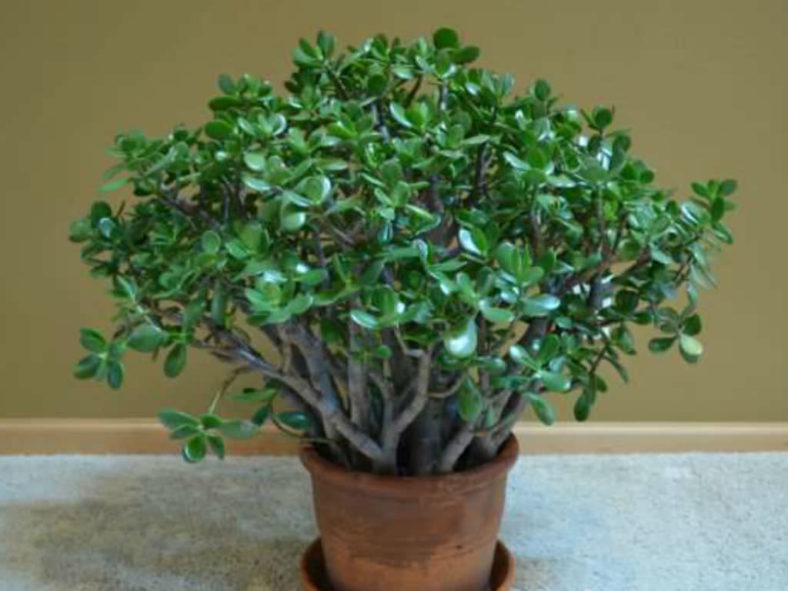Crassula ovata, commonly known as Jade Plant, is a succulent often used as a houseplant. This well-behaved plant blends into the landscape in USDA hardiness zones 9 through 11, where it thrives on neglect. Few pests or diseases affect the Jade Plant, but when white powdery mold appears on its leaves, it is often the result of environmental problems. You will likely deal with powdery mildew if you have white mold on your Jade Plant. True to their easy-care nature, though, Jade Plant bounces back from powdery mildew once properly treated.
Powdery Mildew
Powdery mildew is caused by several different fungi that grow in a thin layer on plant tissues. In perennial plants such as the Jade Plant, the fungal bodies can overwinter in buds, reemerging when conditions are ideal for their growth. Spores are often distributed by the wind to new, uninfected plants or spread in greenhouses from plant to plant. Temperatures between 60°F and 80°F (16°C and 27°C) are required for germination, along with relative humidity above 90 percent. Standing water on leaves is unnecessary and can sometimes inhibit spore germination. Standing water encourages further fungal growth, so it should be discouraged.

Damage
Powdery mildew begins as a white powdery coating on the plant's leaf surfaces but soon spreads, penetrating plant tissues and sending out spores. Emerging vegetation may be dwarfed or distorted and covered in white mildew. Jade Plant also develops corky brown lesions where powdery mildew is taking hold. If not addressed, this mildew will spread further, resulting in leaf drop and the plant's eventual death.
Cultural Control
Cultural control is effective for powdery mildew. Plant the Jade Plant in full sun and trim it to encourage better air circulation. Reduce watering if the plant's soil is often moist. Always allow the soil to dry before watering Jade Plants. Powdery mildew spores can be killed with water, but be careful to wet the plant early in the day to dry it completely. Stop misting house Jade Plants instead of watering them at the plant's base, since humidity around the plant encourages powdery mildew growth.
Chemical Control
Several chemicals are available for chronically infested plants or those that are victims of environmental conditions beyond the gardener's control. Test a safer pesticide, such as horticultural or neem oil, on a small spot on your Jade Plant before spraying the entire plant thoroughly. If an outside Jade Plant yellows or shows signs of sunburn, utilize a sunshade until signs of powdery mildew are gone to prevent serious damage. Never apply horticultural oils when temperatures are above 90°F (32°C).
Source: sfgate.com
Links
- Back to genus Crassula
- Succupedia: Browse succulents by Scientific Name, Common Name, Genus, Family, USDA Hardiness Zone, Origin, or cacti by Genus